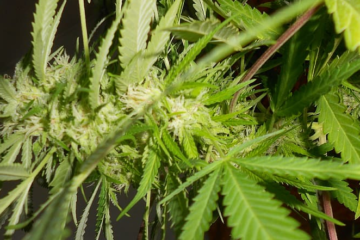In a groundbreaking shift towards sustainable construction, hemp is making a name for itself as a viable building material in the United States. Known as hempcrete, this plant-based material is carving out a niche in the construction industry, offering a greener alternative to traditional building materials.
The Rise of Hempcrete in Construction
Hempcrete’s journey from a niche product to a mainstream construction material is a testament to its versatility and environmental benefits. The Lower Sioux Indian Community in Minnesota has been at the forefront of this movement, opening a 20,000 sq ft hempcrete facility. The community has embraced hempcrete for its resistance to mold, pests, fire, and its ability to regulate internal temperature, making it an ideal material for housing construction.
The growth of hemp on tribal lands was initially met with skepticism due to the stigma surrounding hemp. However, the community’s perspective shifted as they recognized the benefits of hempcrete, which, by law, contains less than 0.3% THC. This eco-friendly material is not only cost-effective, reportedly saving up to 20% compared to conventional construction, but also sequesters carbon, contributing to the fight against climate change.

Innovations and Economic Opportunities
The potential of hemp as a building material is being explored beyond the Lower Sioux Indian Community. Oregon State University’s Global Hemp Innovation Center received a $10 million grant to collaborate with thirteen indigenous tribes, promoting innovations and economic opportunities from hemp products and materials. This initiative aims to create supply chains for hemp production and processing, as well as professional development opportunities.
The US Hemp Building Association announced that the International Code Council included a hemp-lime appendix in the 2024 International Residential Code. This inclusion marks a significant step towards the integration of hempcrete in building codes across the United States, paving the way for its broader adoption.
The Environmental Impact of Hempcrete
Hempcrete’s environmental credentials are impressive. It is almost carbon-negative, capturing more than twice its own weight in carbon—twice as fast as traditional forestry. This characteristic positions hempcrete as a key player in reducing the construction industry’s carbon footprint, which is crucial given the cement industry’s responsibility for about 8% of global carbon dioxide emissions.
The material’s non-toxic and mold, fire, and infestation-resistant properties further enhance its appeal. Hempcrete is not load-bearing, so it is primarily used for thermally efficient insulation and interior walls, contributing to energy-efficient buildings.



